Calculation of PR in solar power plants and verification of the calculated PR value are among the services we offer the most today. Although a detailed methodology is given in IEC61724-1 on the calculation of PR, it is generally calculated as “Realized Production” / “Expected Production”. As a result of this calculation, we come up with a PR rate and we use this as a basis, but actually calculating PR “correctly” is a much more painstaking process.
First of all, it is preferable to calculate PR on an hourly rather than daily basis, and even more than hourly, on a minute-by-minute basis.
Let us now recall the formulation of PR as specified in the standard.

Here we determine the unit time. We can calculate PR for a day as a daily total or as a sum of hours. Have you ever wondered how PR changes/should change throughout the day?
For example, let’s calculate the PR of a facility on a daily basis for the past 7 days.
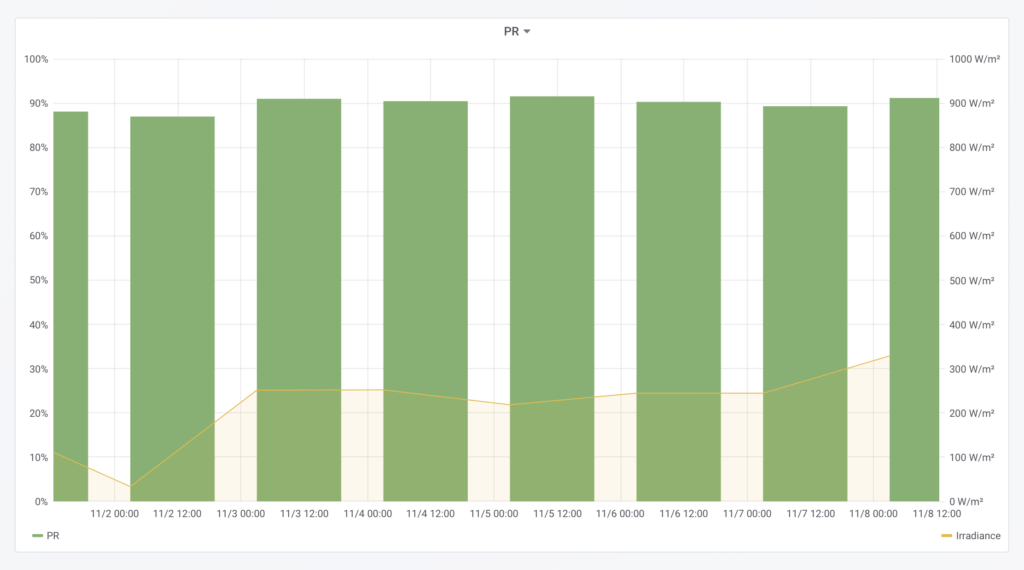
As you can see, it oscillates between 88% and 92% every day. Now let’s take it one step further and calculate it hourly.
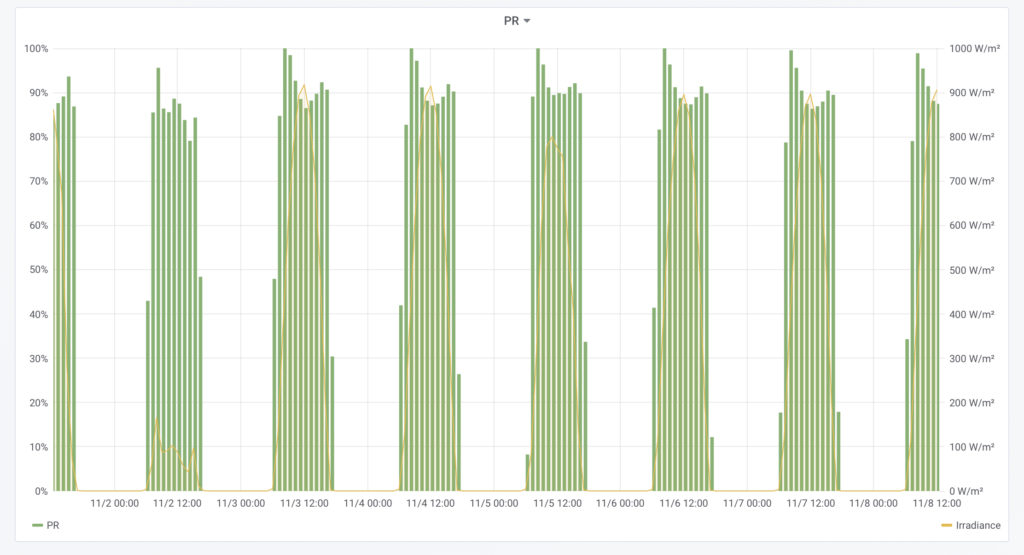
Look how PR changes hourly. According to the formulation in the IEC standard, our PR increases in the morning and in the afternoon when it gets cooler. Now let’s take it one step further and calculate 5 minutes.
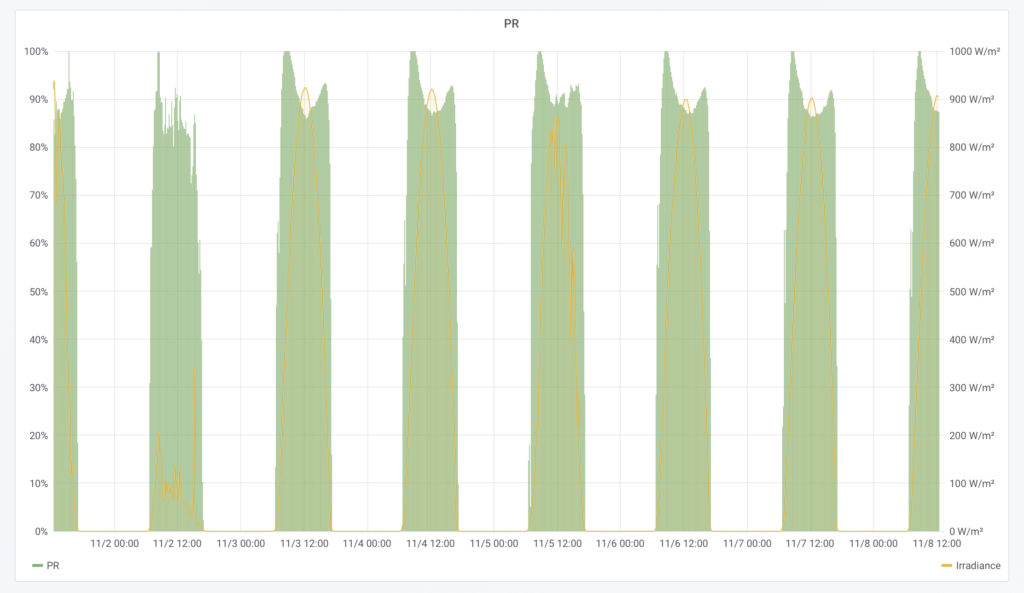
How does our PR oscillate when it becomes minute. But there are cases where the PR goes over 100% for a second, how does it happen? There are two PR calculation methodologies in IEC61724-1; the first is the PR calculation that does not take into account the panel temperature that I calculated above. Now let’s integrate the panel temperatures into the system and calculate the minutes. Let us first recall the formulation by which we calculated the regulation by temperature.

Now let’s calculate our temperature corrected PR value according to this formulation.
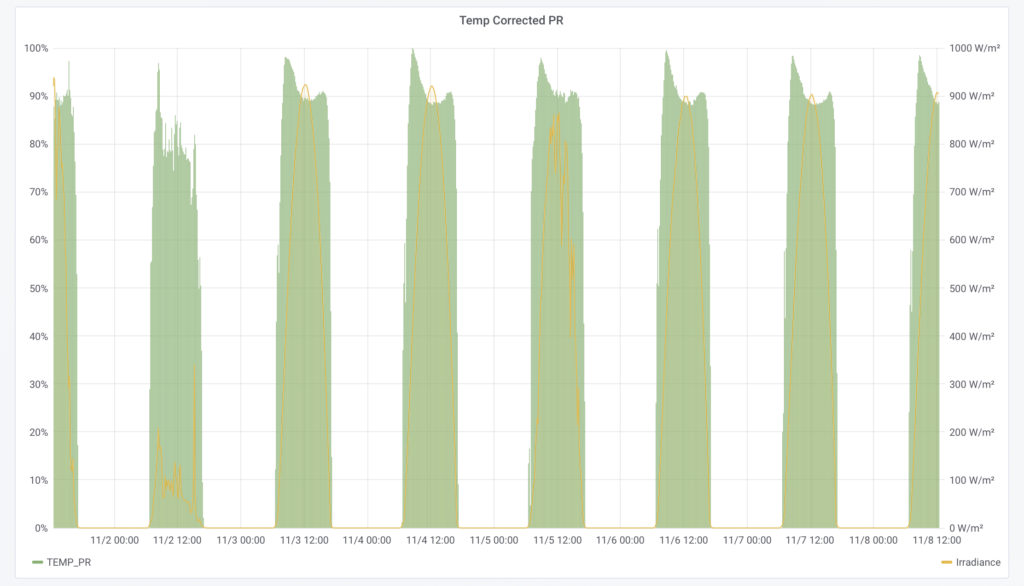
If you notice, there is no PR calculation above 100% and the PR value is now more stable throughout the day. We are now calculating PR with minute precision, but does the process end here? No, no, no.
This is the actual PR of the system we calculate. In fact, if there is a problem in the system, this PR may not be 84% but 82% (82% according to whom?) and we cannot catch it. Now we simulate this realized PR value again according to the actual irradiance/temperature values of the facility and compare the resulting PR values.
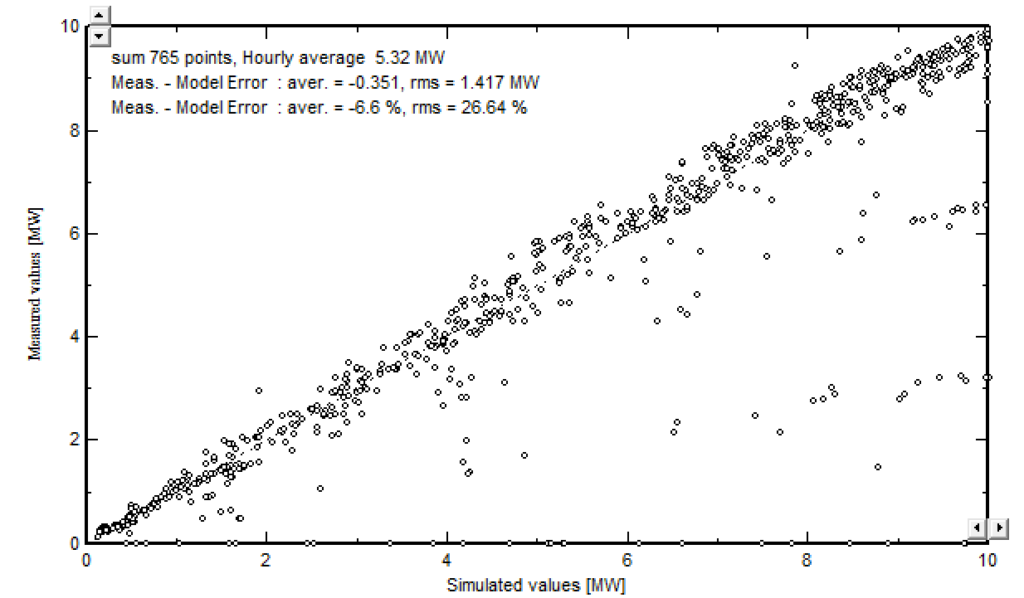
There have been some power outages / shutdowns in this plant, but there is no problem in the general behavior of the plant. The PR value we calculated above is very close to the actual PR value of the plant. At this stage, we can say that there is no problem in the facility.
Is PR alone a sufficient metric? No, it is not. As Solarian, we detail our calculations in the facilities we monitor and manage, from the effects of shadow losses in the winter months to the changing efficiency of inverters, so that we can reach clearer; error-free results. PR is just one of many variables for us.
If the health and production performance of your plant is important to you and you suspect that your plant is not producing enough, contact us.
Email : [email protected]